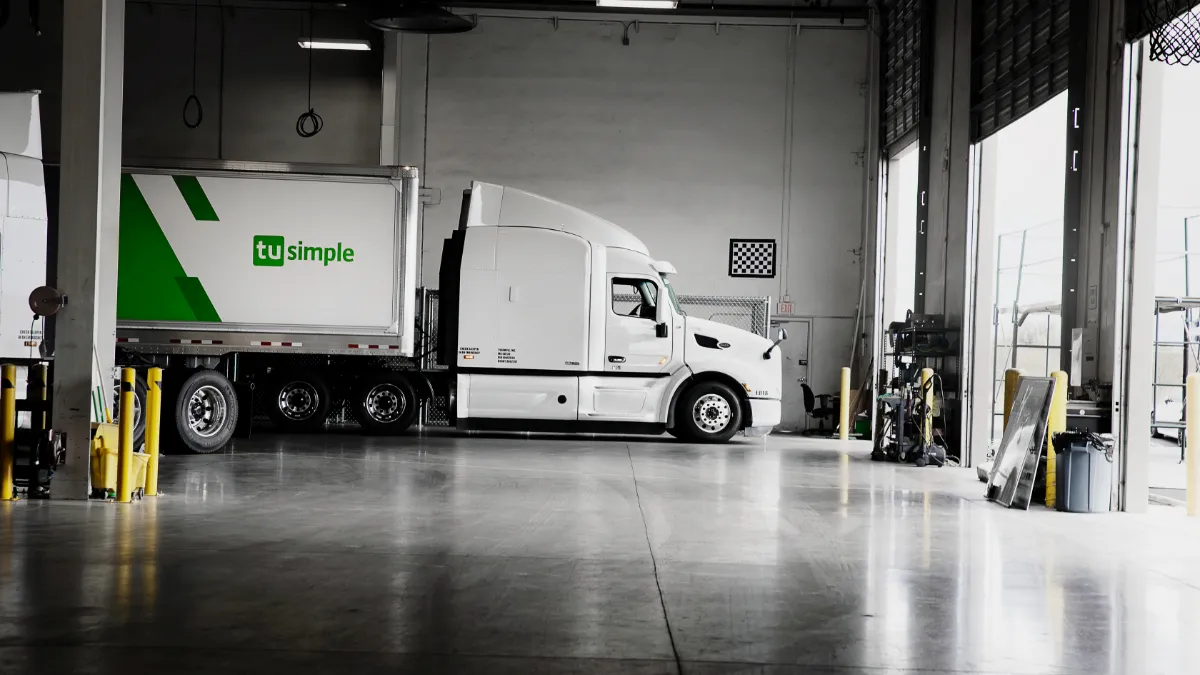Dive Brief:
- TuSimple is working with UPS Supply Chain Solutions to expand its Autonomous Freight Network and begin commercial runs to UPS North American Air Freight terminals in Orlando, Florida, and Charlotte, North Carolina, TuSimple announced Wednesday.
- TuSimple and UPS have been partners for nearly three years, accumulating more than 160,000 autonomous miles, according to the technology maker. The autonomy system has yielded more than 13% fuel savings, compared to human drivers, "when operated in the optimal long-haul operating band from 55 to 68 miles per hour," TuSimple said.
- There are still some kinks to work out, when it comes keeping the equipment moving, TuSimple CEO Cheng Lu told Transport Dive. "Carriers, shippers — they expect very high uptime," which is a benefit of autonomy in general, he said, as the technology isn't beholden to human limitations. But "the truth is, we have some ways to go to make sure that uptime is ... where we want it to be."
Dive Insight:
Trucking fleets continue to take sides with the big autonomous companies.
In September, FedEx announced a partnership with Paccar and autonomy developer Aurora to test autonomous vehicles. Aurora's technology will be installed in Paccar models, in trial runs for FedEx.
TuSimple and its competitors tend to focus on the easiest tasks for the autonomous trucks. Instead of worrying about obscure lanes, the focus has been on prominent interstate lanes between big cities, such as Orlando and Charlotte in the case of Wednesday's announcement.
Carriers see a "tremendous economic argument" for autonomous trucks, Chuck Price, chief product officer at TuSimple, said during the Advanced Clean Transportation Expo in September.
Part of the economic argument is fuel savings, according to Lu. "That, in itself, is a business case already for autonomous technologies."
And while the technology may take time to test in the market, Lu said trucking companies that make reservations now will have an advantage.
"This is not a technology or product that you can just drive off the lot three years from now," Lu said.
The equipment has to integrate with operations, lanes and the TMS — and if fleets do that work ahead of time, they can start making money with the trucks sooner.
"It's plug-and-play, rather than having that new learning curve," Lu said. "I think the forward-looking customers understand that."
This story was first published in our sister publication, Transport Dive. Sign up here.















